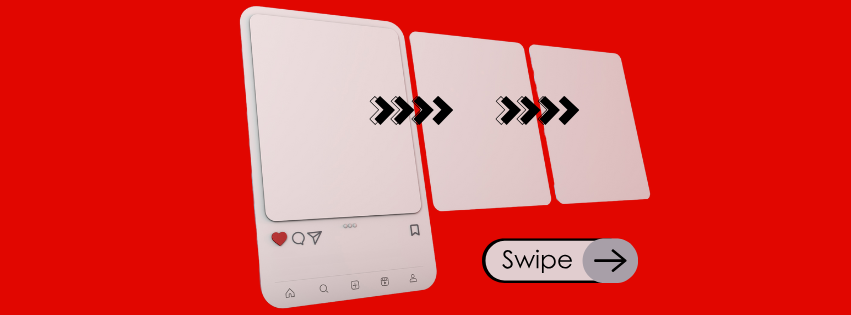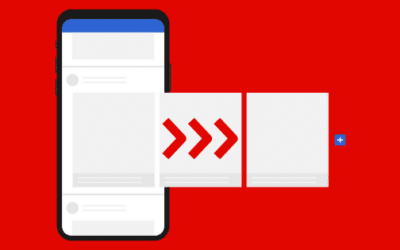When you scroll on social media, every photo and video captures your attention and makes you eager to discover the next piece of content. The carousel format was designed to spark curiosity and encourage users to scroll over and over again. It is precisely this dynamic that we wish to recreate in our mobile course activities. Thanks to a sequence of well-designed cards, you can capture learners’ attention from the very first card and sustain their interest until the end of the pathway.
Here are a few recommendations for a successful mobile course.
Vary the cards to maintain engagement
Varying the types of cards helps to stimulate attention and actively engage learners. The choice and order of cards must be adapted to encourage memorisation and promote proper understanding of the key concepts.
Alternate information, flash and quiz cards to create a pleasant flow. Insert transition cards between sections to avoid saturation and to enable learners to assimilate each point before passing on to the next one.
Card examples for a retail-oriented mobile course:
- Information card: presenting the features of the store’s latest item.
- Flash card: on the front, the question, “What are the three special strengths of our new collection?” with the answers provided on the back. This enables quick memorisation of the key sales messages.
- Transition card: between the “Product knowledge” and “Sales techniques” sections, with a motivational message such as, “Ready to discover how to effectively convince our customers? Let’s explore sales techniques”
- Quiz card: A quiz asking: “What’s the best argument for promoting X product among young shoppers?” with several possible answers to help learners discover best practices.
Create concise cards and summary cards
For effective training, learners must be able to pick up important information quickly. Cards must be short, direct and snappy, with an optimised visual presentation. Use simple phrases and well-chosen key words, playing on formatting (bold, highlighting, italics) to draw the attention to the main points. A good card should transmit a clear message at a glance.
We recommend limiting the content on each card to a maximum of two key ideas. Any more than this makes it hard for learners to assimilate information, especially in a working environment, where attention time is often limited.
At the end of the mobile course, remember to include summary cards. These cards help learners to review the main points, and play a fundamental role in memorising information.
Example of a summary card for a retail-oriented course:
- Title: “Summary of Welcoming Techniques”
- Content: A round-up of the main points, presented in a visual manner:
- Greet with a smile
- Ask open questions
- Adapt your recommendations
- Visual tip: use icons or emojis to illustrate each stage, for example, a smile icon for the first point, a question mark for open questions and an outstretched hand for product recommendations.
Create interactive and operational cards
Interactivity is an essential lever for capturing attention and anchoring knowledge in practical applications. Interactive cards offer an opportunity to go beyond simple information transmission: they allow you to actively involve learners and to propel them into real-life situations. Don’t forget to ask questions to grab the learner’s attention, such as, “How would you present this product to a customer in a hurry?” or, “What argument would you use to convince an undecided customer?” You can provide the answers to the questions on the back (if it’s a flash card) or on the following card.
To engage learners, it is also crucial to connect mobile course content to practical applications. By formulating the content in a concrete and easy-to-implement manner, you can help learners visualise using the techniques and knowledge in their work environment. For example, instead of simply describing a sales technique, create a card that invites learners to imagine a conversation with a customer: “A customer is looking for a birthday gift. What would you recommend?”
Add visual cues
Visual cues, like progress indictors or points that light up as you move through the cards, are an effective way of guiding learners and sustaining their motivation. By tracking their development, learners feel spurred on to continue and they know exactly how many more stages they have to go. These markers make the pathway clearer and more motivating, especially for long mobile courses, by offering a feeling of accomplishment at each stage.
Creating an effective mobile course means designing a lot more than a series of cards. You need to offer a seamless and engaging experience, where each card captures the learner’s attention and encourages them to continue. By varying the types of cards – information, flash, quiz and transition – you set a pace that holds the learner’s interest. Concise cards help to focus on key points and to quickly anchor ideas, while summary cards consolidate the memorisation of essential aspects, serving as handy markers. Interactive cards add depth by anchoring learning in concrete circumstances, which helps learners to visualise and to get actively involved.

D’abord éditrice de manuels scolaires, professeure et coordinatrice pédagogique à l’Université, Julia a rejoint l’équipe Learning Experience chez Teach on Mars pour apporter ses compétences en pédagogie. La gamification et la différenciation pédagogique sont notamment ses chevaux de bataille.




